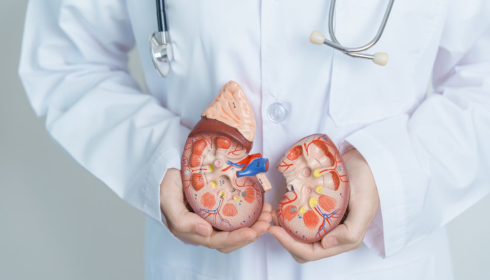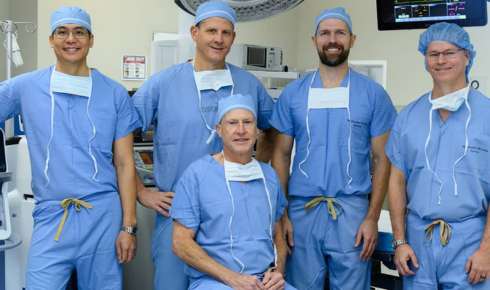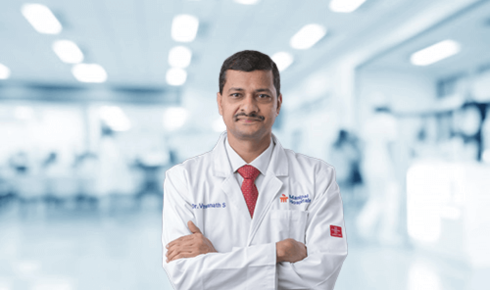
Nose Surgery for Wide Nose – What You Need to Know
1. Understanding Wide Nose
A wide nose is characterized by a broader nasal bridge and nostrils, often leading to dissatisfaction with facial aesthetics. Nose surgery, or rhinoplasty, offers a solution for those seeking to address the width of their nose and achieve a more balanced facial profile.
2. What is Rhinoplasty?
Rhinoplasty is a surgical procedure aimed at reshaping and restructuring the nose to enhance its appearance and function. It can address various concerns, including wide nose, crookedness, bumps, and asymmetry, through precise surgical techniques.
3. Assessment and Consultation
Before undergoing rhinoplasty for a wide nose, a thorough assessment and consultation with a board-certified plastic surgeon are essential. During the consultation, the surgeon will evaluate your nasal anatomy, discuss your goals and expectations, and develop a personalized treatment plan.
4. Types of Wide Nose Correction
There are different approaches to correcting a wide nose depending on the specific characteristics and goals of the patient. These may include narrowing the nasal bridge, refining the nasal tip, and reducing the width of the nostrils to achieve a more harmonious facial appearance.
5. Surgical Techniques
Rhinoplasty for a wide nose may involve various surgical techniques, such as osteotomies to narrow the nasal bones, tip refinement through cartilage reshaping or grafting, and alar base reduction to decrease nostril width. The chosen techniques will depend on individual anatomy and desired outcomes.
6. Closed vs. Open Rhinoplasty
Rhinoplasty can be performed using either a closed or open approach. In closed rhinoplasty, incisions are made inside the nostrils, resulting in no external scarring. Open rhinoplasty involves an additional incision across the columella, providing better access for complex nasal reshaping.
7. Recovery Process
Following rhinoplasty for a wide nose, patients can expect a recovery period of several weeks to months. Swelling, bruising, and discomfort are common during the initial stages of recovery, gradually subsiding over time as the nose heals and settles into its new shape.
8. Managing Expectations
It is important for patients to have realistic expectations about the outcomes of rhinoplasty for a wide nose. While significant improvements can be achieved, perfection is not always attainable, and some degree of asymmetry or imperfection may persist.
9. Risks and Complications
As with any surgical procedure, rhinoplasty for a wide nose carries potential risks and complications, including infection, bleeding, anesthesia risks, and unsatisfactory aesthetic outcomes. However, these risks can be minimized by choosing a skilled and experienced surgeon.
10. Benefits of Rhinoplasty
Rhinoplasty offers numerous benefits for individuals with a wide nose, including improved facial harmony, enhanced self-confidence, and correction of functional issues such as breathing difficulties. The procedure can have transformative effects on both appearance and quality of life.
11. Recovery Tips
During the recovery period, it is important to follow your surgeon’s post-operative instructions carefully. This may include avoiding strenuous activities, sleeping with your head elevated, applying cold compresses to reduce swelling, and attending follow-up appointments for monitoring.
12. Long-Term Results
The final results of rhinoplasty for a wide nose may take several months to fully manifest as swelling subsides and the nose settles into its new shape. However, the majority of patients experience long-lasting and satisfying outcomes that enhance their facial aesthetics.
13. Revision Rhinoplasty
In some cases, patients may require revision rhinoplasty to address any residual imperfections or refine the results further. Revision surgery is typically more complex and may involve additional techniques to achieve the desired outcome.
14. Cost Considerations
The cost of rhinoplasty for a wide nose can vary depending on factors such as the surgeon’s experience, geographic location, facility fees, and anesthesia costs. It is important to discuss the financial aspect of surgery during the consultation and explore payment options available.
15. Choosing a Qualified Surgeon
Selecting a qualified and experienced plastic surgeon is paramount to achieving successful outcomes with rhinoplasty for a wide nose. Look for board-certified surgeons with specialized training and a proven track record of delivering natural-looking results.
16. Preparing for Surgery
Preparation for rhinoplasty involves taking steps to optimize your overall health and well-being before the procedure. This may include quitting smoking, avoiding certain medications that can increase bleeding risk, and following pre-operative instructions provided by your surgeon.
17. Psychological Considerations
It is important to consider the psychological aspects of undergoing rhinoplasty for a wide nose. While the procedure can improve self-esteem and confidence, it is essential to have realistic expectations and undergo surgery for the right reasons.
18. Alternative Options
In some cases, non-surgical alternatives such as injectable fillers or nasal reshaping with dermal threads may offer temporary improvements for individuals hesitant to undergo surgery. However, these options are limited in their ability to achieve significant and permanent changes.
19. Patient Testimonials
Reading testimonials and reviews from previous rhinoplasty patients can provide valuable insights into the surgical experience and outcomes. Look for testimonials from patients with similar concerns and aesthetic goals to gain a better understanding of what to expect.
20. Cultural Considerations
Cultural perceptions of beauty and nasal aesthetics may influence individual preferences and motivations for undergoing rhinoplasty for a wide nose. It is important to consider cultural factors and how they may impact your decision-making process.
21. Post-Surgery Care
After rhinoplasty, diligent post-operative care is essential for optimal healing and results. This may include attending follow-up appointments, practicing good nasal hygiene, avoiding trauma to the nose, and wearing sunscreen to protect the skin from sun damage.
22. Addressing Functional Concerns
In addition to addressing cosmetic concerns, rhinoplasty for a wide nose can also improve nasal function and alleviate breathing difficulties associated with nasal obstruction. Functional improvements are an important consideration for many patients seeking surgery.
23. Lifestyle Changes
Following rhinoplasty, some patients may choose to make lifestyle changes to maintain their results and overall well-being. This may include adopting a healthy diet, regular exercise routine, and skincare regimen to support long-term facial aesthetics.
24. Post-Surgery Support
Having a strong support system in place during the recovery period can greatly enhance the surgical experience. Seek support from family, friends, and your healthcare team to help you navigate the physical and emotional aspects of rhinoplasty.
25. Final Considerations
Rhinoplasty for a wide nose can be a transformative experience, offering the opportunity to enhance facial aesthetics and improve self-confidence. By thoroughly researching your options, selecting a qualified surgeon, and preparing for surgery, you can achieve satisfying and long-lasting results that enhance your overall quality of life.



